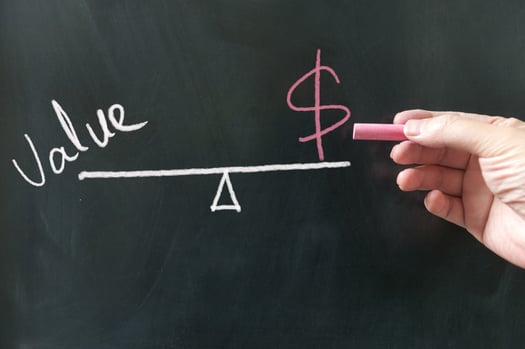Welcome the final part of our four-part series on pricing data products. To date, we have provided a comprehensive framework for extablishing a market value for data products. This used to be opaque guesswork, but now pricing data can take a pracitcal and more orderly approach. In this blog post, we will discuss how to actually set a pricing strategy on the DataStreamX maretplace, for multiple types of products.
Read on for more! As always, subscribe to our blog to stay informed and continue on below for detail on the nine pricing levers of a data product..
 DataStreamX gives Vendors full control on how to set the price of their data products. Vendors can list and price data products on our platform in several ways:
DataStreamX gives Vendors full control on how to set the price of their data products. Vendors can list and price data products on our platform in several ways:- Monthly subscription with optional one-time fee
- Single purchase data product for one-time downloads of reference and historic data
Typically for streaming data or continuously updating data, a monthly subscription is most common. This data type holds most value when it is consumed close to the time of origin. When buyers derive a larger amount of value during the initial months consuming a data product than they do in subsequent months, Vendors should consider charging a one-time fee to the buyer. Since DataStreamX does not force long-term contracts, a one-time fee is best used to capture the total value of a data product, while also ensuring an ongoing revenue stream from the subscription.
For reference data and historic data, a clear understanding of the target buyer is needed in order to understand the inherent value that the data possesses. For example, real estate developers would want to have robust, analyzed historic data sets in order to forecast and manage risk before making large capital investments in new commercial properties. Conversely, historic and reference data for oil commodities is less valuable than real-time data since futures pricing can change in milliseconds. The ability to assign premium prices to reference and historic data products largely depends on who will primarily consume the data and the necessity for immediacy.
Finally, DataStreamX recommends pricing data competitively in order to gain wider adoption and lower the inhibitions of “fringe” customers wanting to test and sample data products. Because DataStreamX provides Vendors complete visibility into their customer base, Vendors can better understand who their target customers are. By setting a competitive price on the marketplace, Vendors have the opportunity to attract a broader set of users and be able to better serve these customers. With a broader set of users, Vendors can become smarter: building better data products to meet market needs or adjusting prices to capture the maximum willingness to pay.
That's it! You should be ready to start assessing your data products for their market potential. For the complete guide on how to price data, click the link below.
Additionally, don't forget to follow our product structuring blog series found here: Structured to Sell
As always, we encourage anyone interested in joining the data economy to register with DataStreamX and browse our marketplace. Check us out at www.datastreamx.com today!


